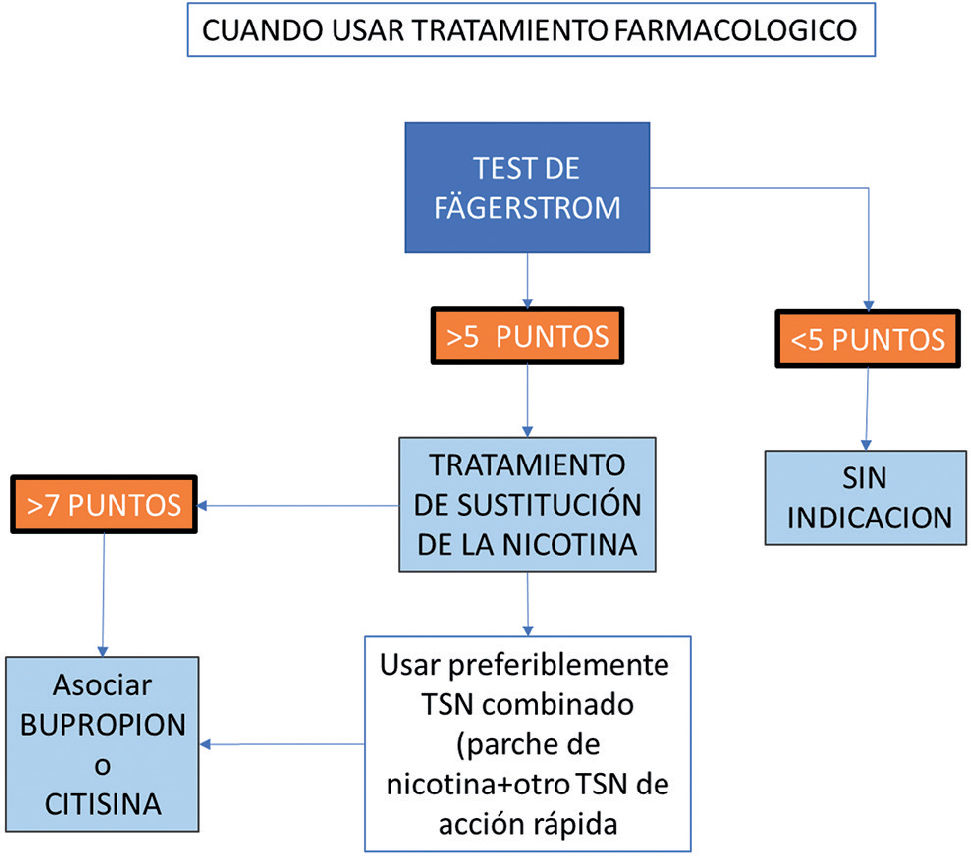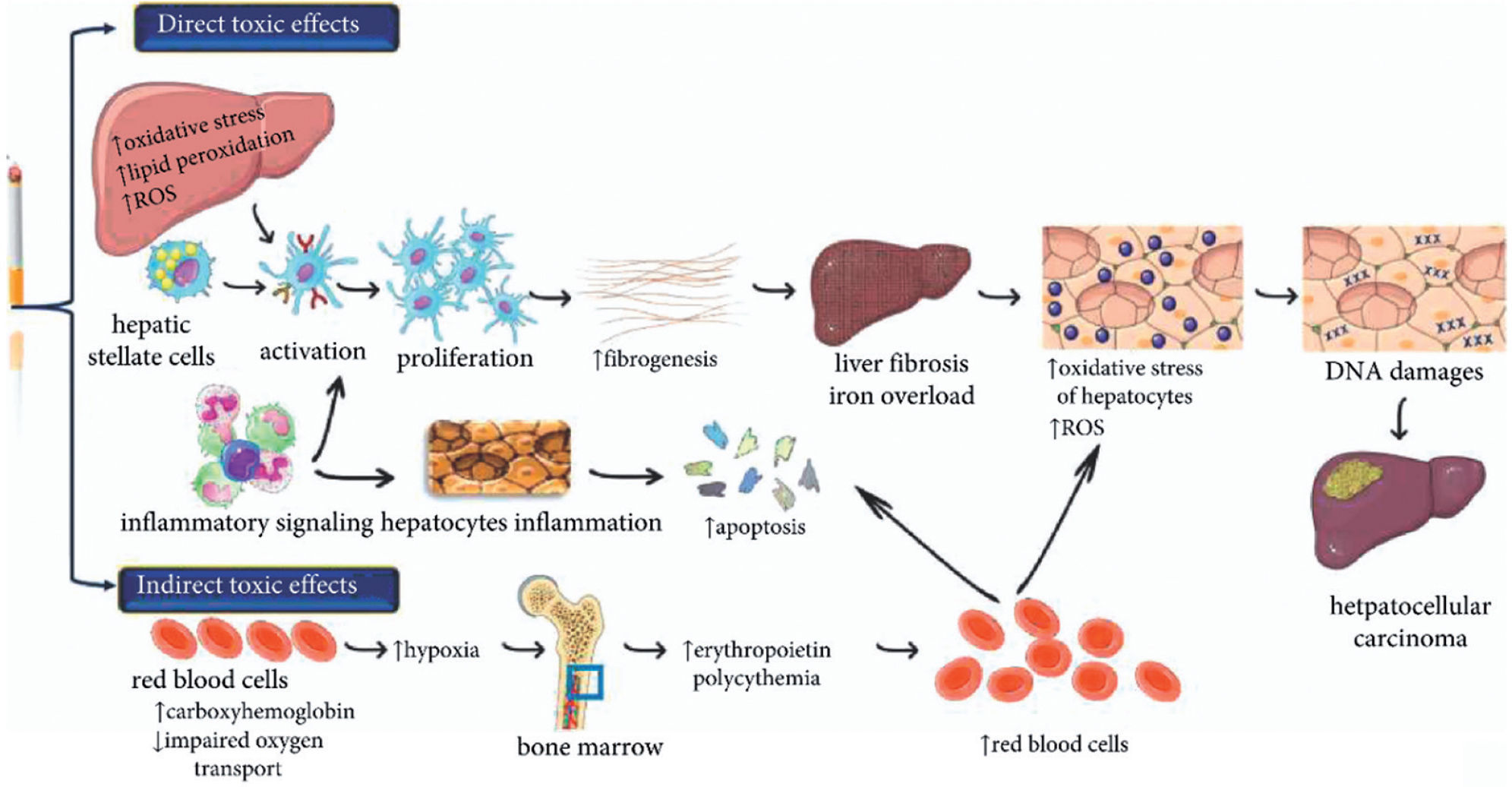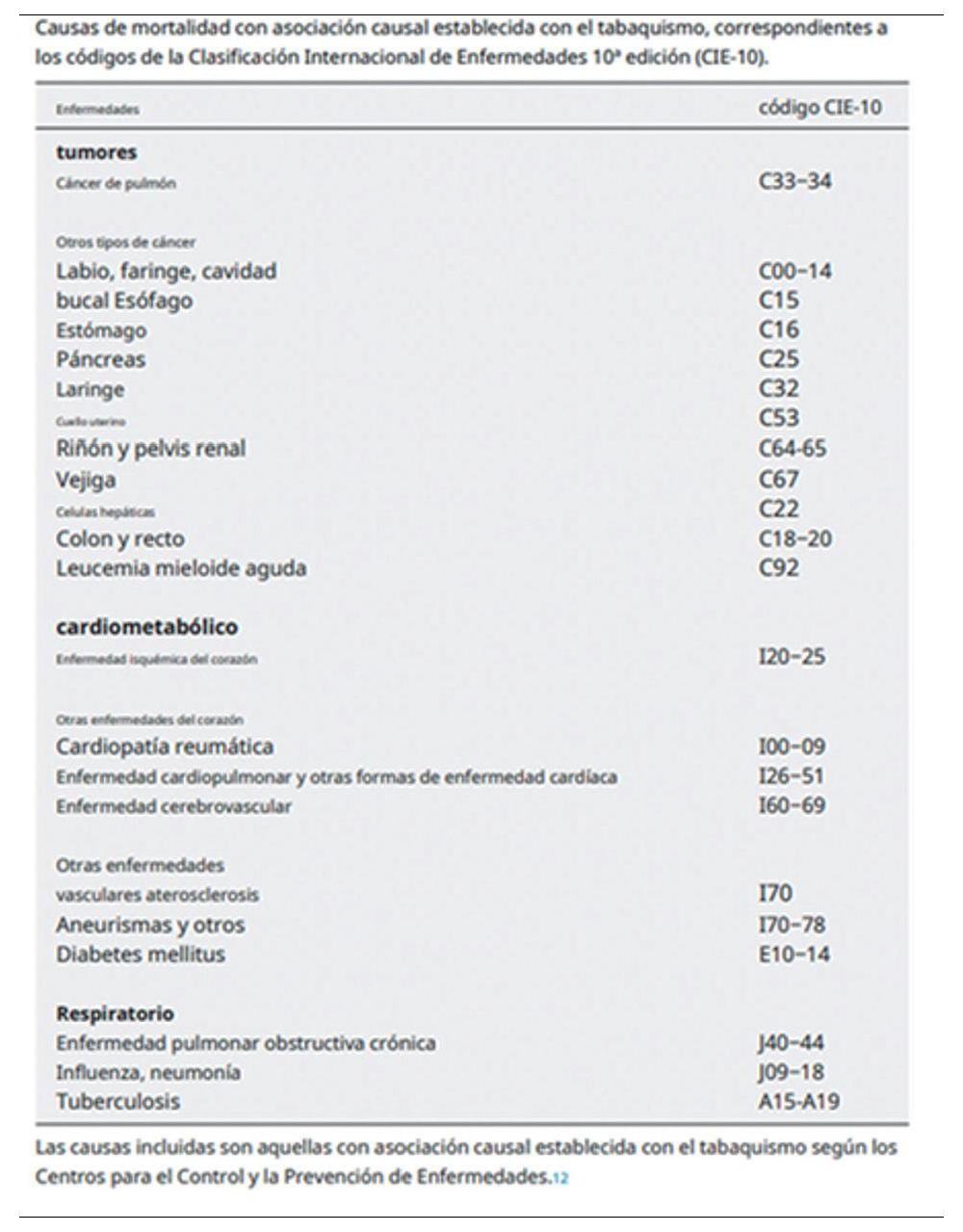
El 22% de la población española es fumadora diaria. Los hombres son más fumadores. En España las mujeres entre 15-25 años fuman igual o más que los hombres. A todo fumador deberá valorársele: su dependencia física a la nicotina (test de Fagerström), la dependencia social y psicológica (test de Glover Nilsson), su grado de motivación para abandonar el hábito (test de Richmond), las probabilidades de éxito de las terapias (test de Henri-Mondor y Michael-Fiore) y la etapa evolutiva del cambio de conducta (Prochaska y DiClementi). El consejo antitabaco es muy costo-efectivo y debe darse siempre. El tabaquismo es un factor potenciador del riesgo cardiovascular por ser un agente patógeno para el desarrollo de arteriosclerosis y está asociado a cardiopatía isquémica, ictus y arteriopatía periférica. El tabaquismo aumenta el riesgo de enfermedades pulmonares crónicas (EPOC) y está relacionado con cánceres de pulmón, genitales femeninos, laringe, orofaringe, vejiga, boca, esófago, hígado y vías biliares, y estómago, entre otros. Deben evitarse los anticonceptivos orales combinados en mujeres fumadoras > 35 años por el riesgo de tromboembolismo. En la deshabituación tabáquica es importante la implicación y se necesita la colaboración multidisciplinar de médicos, enfermeros, psicólogos, etc. Disponemos de tratamientos farmacológicos eficaces para la deshabituación tabáquica. Se aconsejan tratamientos combinados cuando la dependencia del fumador es elevada. Para los individuos que no consiguen dejar de fumar, una estrategia basada en la gestión del daño por tabaquismo con el cambio total a productos sin humo, podría ser una alternativa menos peligrosa para su salud que seguir fumando.
Consensus statement on smoking and vascular risk
About 22% of the Spanish population are daily smokers. Men are more likely to smoke than women. In Spain, women between 15-25 years of age smoke as much or more than men. Every smoker should be assessed for: physical dependence on nicotine (Fagerström test), social and psychological dependence (Glover Nilsson test), level of motivation to quit (Richmond test), probability of therapy success (Henri-Mondor and Michael-Fiore tests), and stage of behavioral change development (Prochaska and DiClementi). Advice on smoking cessation is highly cost-effective and should always be provided. Smoking is an enhancer of cardiovascular risk because it acts as a pathogen agent in the development of arteriosclerosis and is associated with ischemic heart disease, stroke, and peripheral artery disease. Smoking increases the risk of chronic lung diseases (COPD) and is related to cancers of the lung, female genitalia, larynx, oropharynx, bladder, mouth, esophagus, liver and biliary tract, and stomach, among others. Combined oral contraceptives should be avoided in women smokers older than 35 years of age due to the risk of thromboembolism. In smoking cessation, the involvement of physicians, nurses, psychologists, etc. is important, and their multidisciplinary collaboration is needed. Effective pharmacological treatments for smoking cessation are available. Combined treatments are recommended when smoker's dependence is high. For individuals who are unable to quit smoking, a strategy based on tobacco damage management with a total switch to smokeless products could be a less dangerous alternative for their health than continuing to smoke.
Artículo
Comprando el artículo el PDF del mismo podrá ser descargado
Precio 19,34 €
Comprar ahora













































































